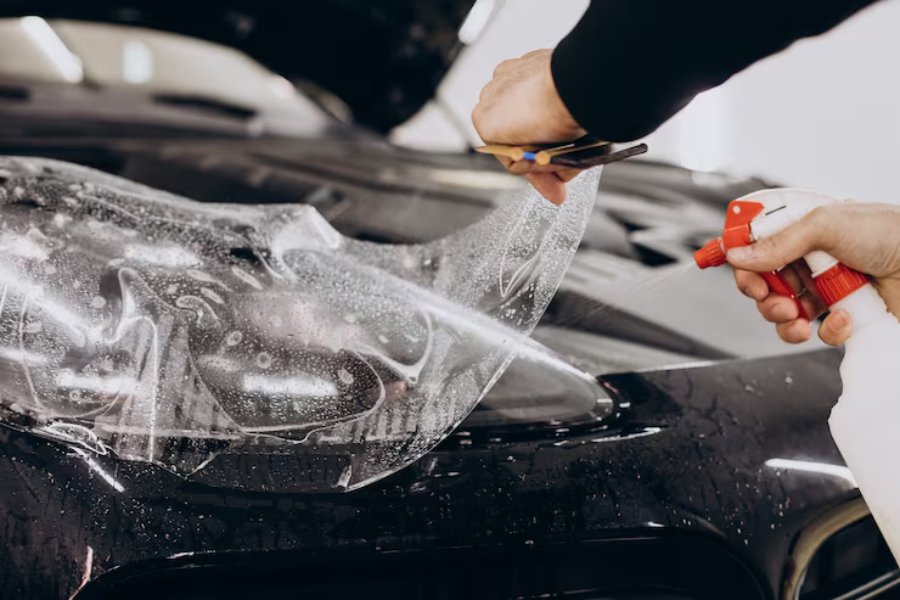Clear paint protection film (or PPF) is a transparent layer. It’s applied directly to a vehicle’s paint. The material stops damage from rocks, bugs, and weather. Cars with PPF keep their factory finish looking new for years. This protection has become standard for anyone serious about maintaining vehicle appearance. A clear PPF film offers an almost invisible shield that enhances shine while preventing scratches, chips, and fading. It’s an excellent investment for long-term car care, ensuring your vehicle maintains its flawless look and resale value even after years of exposure to harsh road conditions.
Understanding Clear Paint Protection Film Technology
PPF consists of a thermoplastic urethane material. It has multiple layers. This creates a durable, nearly invisible barrier. PPF thickness ranges between 4 to 10 mils. Modern formulations include self-healing properties. This eliminates minor scratches through heat exposure. The top coat contains elastomeric polymers. The polymers return to their original state after surface damage occurs.
Benefits of Paint Protection Film
Paint protection film delivers measurable advantages. The film stops rock chips and road debris from spoiling car paint. PPF resists chemical stains from bird droppings, tree sap, and acid rain. The protective layer maintains the original paint’s condition. This preserves vehicle resale value. Self-healing technology eliminates minor scratches automatically. Light swirl marks vanish with sun exposure or warm water application. The film provides defense against environmental contaminants. PPF-protected vehicles retain factory finish longer than unprotected surfaces. The investment protects against costly paint repairs.
Installation and Coverage Options
Professional installers apply PPF using precise computer-cut patterns. These patterns match specific vehicle makes and models. The installation process requires surface preparation. It also needs heat application for proper adhesion. Coverage options range from partial to full-body protection. Partial applications focus on high-impact areas. Examples of these areas are front bumpers, hoods, fenders, and side mirrors. Full-body installations cover the whole vehicle surface. Each approach serves different protection needs and budget considerations.
Cost Considerations
Paint protection film pricing varies by coverage area. Partial applications are around $500 to $1500. $1,500 to $2,500 is the range for full front-end protection. Full vehicle coverage costs between $3,000-$5,000. They may exceed $5,000 depending on vehicle size. Film quality affects pricing. Premium brands offer superior clarity. They also provide extensive warranties.
Maintenance Requirements
PPF maintenance follows simple guidelines. Regular washing removes contaminants that could stain the film. Hand washing is advisable. It works best for film longevity. Avoid automatic car washes with brushes. They may cause premature wear. Wait a minimum of one week following installation before washing. This allows full curing of the adhesive. Avoid any cleaners with abrasive components. These products damage the film’s top coat. Use pH-neutral soaps designed for PPF. Annual inspections are vital. They help identify edge lifting or damage early.
What to Consider Before Applying PPF
Vehicle age and condition matter. PPF adheres best to factory-fresh paint. Existing damage becomes more visible under film. Paint correction may be necessary before application. Consider driving habits and environment. Vehicles for highway driving benefit most from protection. Choose reputable installers with proven experience. Poor installation creates more problems than protection. Research film brands and warranty coverage. Premium products justify higher costs through performance and durability. Clear paint protection film represents a practical investment for vehicle owners. The technology preserves paint and sustains value in the long run.

